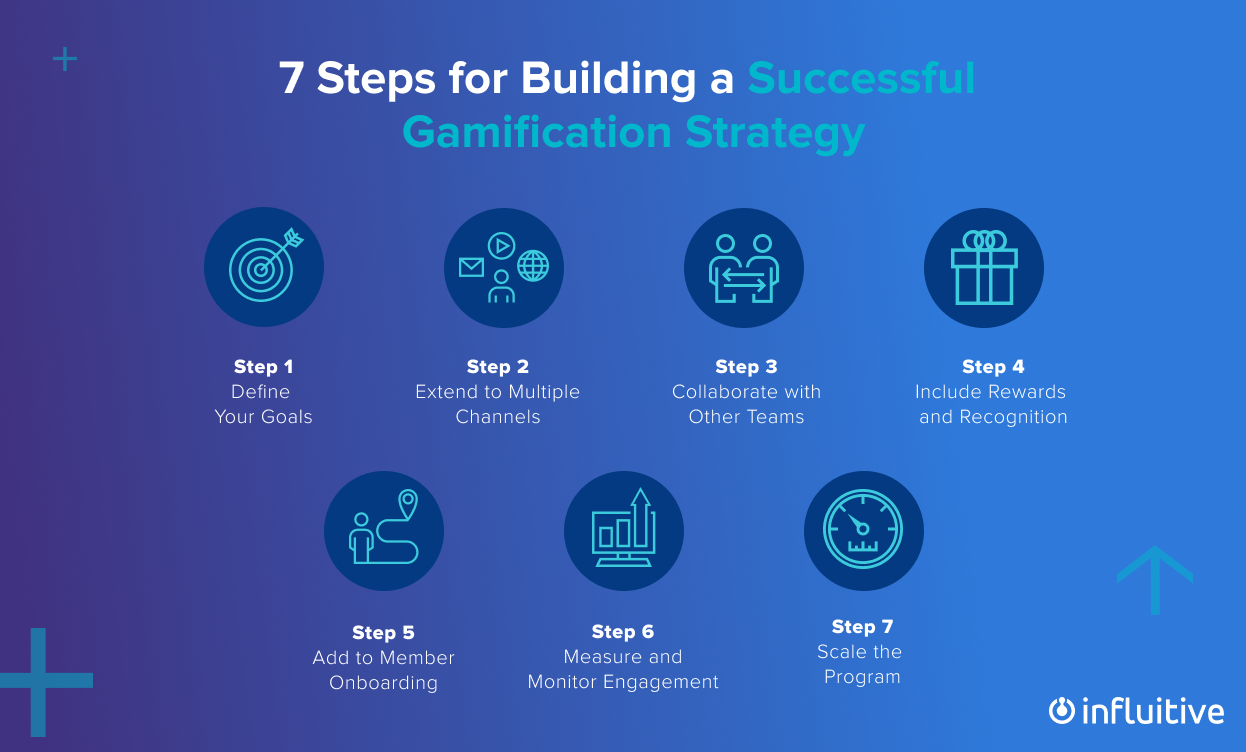Gamification is a powerful tool to drive engagement and incentivize customer participation in your customer programs. By implementing a well-designed gamification strategy, you can create a comprehensive ecosystem that connects various channels and motivates members to actively contribute and engage.
In this article, we’ll walk you through the step-by-step process of building a successful gamification strategy for your customer advocacy program.
Step 1: Define Your Goals and Incentivize Desired Behaviors
To start, determine the behaviors or actions you want to incentivize. Consider consulting with other teams, such as marketing or customer success, to align these goals with the broader objectives of your company. Assign point values to different activities based on their importance or impact, taking into account the effort or time required for each. Differentiate between tasks that require more effort or have a greater impact by assigning higher point values.
Step 2: Extend Gamification to Multiple Channels
Take your gamification beyond your customer advocacy platform and incentivize member actions across various channels, such as your learning management system (LMS), external communities, and marketing campaigns. This will help create a connected ecosystem and maximize member participation. Consider setting up API connections with different platforms to automate the awarding of points and badges for actions outside of your main program.
Step 3: Collaborate with Other Departments
Collaborate with other departments within your organization, such as marketing or events teams, to promote your program. Include information about the program in marketing campaigns and events to reach a wider audience. Create documentation explaining how the gamification program fits into a customer’s broader experience with your brand. Encourage users to register and continue earning points there. Take advantage of dedicated onboarding channels and challenges to educate new members about the program and how members can earn points.
Step 4: Drive Engagement with Rewards and Recognition
To maintain an engaged program, offer appealing rewards and rotate them regularly. Plan to issue new rewards during periods of low engagement to re-engage users. Send notifications to inform users about new rewards or program updates.
Generate engaging content and activities, such as contests, campaigns, surveys, and quizzes. Encourage members to contribute content by asking for suggestions or submissions. Consider industry and regional factors when determining point values. Use badges, levels, and milestones to create a clear and engaging member journey. Encourage continuous participation and progress through the program.
When selecting rewards, consider the preferences and interests of your program members. Popular rewards for audiences may include swag, experiences like conference passes, or tech gadgets like headphones or speakers. If shipping tangible rewards internationally is challenging, consider offering digital or gift card alternatives. Partner with marketing or events teams to procure and stock community swag and rewards easily.
Step 5: Promote Awareness in Member Onboarding
Ensure your members are aware of the gamification opportunities and how they can earn points across different channels. Use consistent branding across all web properties to create a sense of unity and connection. Send email invitations to new members, highlighting the gamification platform and the rewards they can earn. Provide pop-up or in-app notifications to encourage users to claim rewards after completing certain actions.
Step 6: Measure and Monitor Engagement
To measure engagement, track metrics such as the number of active or engaged users in the program per month or year. Monitor additional metrics like NPS, social media activity, and the growth of the program’s member base. Analyze the impact of your program on content production and consumption within your program. Continually assess the effectiveness of your gamification strategies and make adjustments as needed.
Step 7: Scale the Program
Build awareness of your program within your organization by proactively reaching out to different departments and offering to promote their content through the program. Demonstrate the value of the program by showing tangible results and its impact on driving engagement. Differentiate your gamification program from other community platforms to avoid cannibalization. Continuously collaborate with other teams to promote cross-platform engagement.

Conclusion
Building a successful gamification program for your customer programs requires careful planning and a focus on strategically incentivizing desired behaviors. By implementing these steps, you can create an engaging, connected, and thriving ecosystem that drives customer satisfaction, loyalty, and ongoing support.
To get inspired and see how this can be successfully put in place, check out our latest on-demand webinar with InterSystems.












































